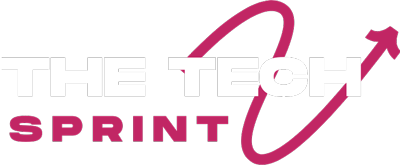In today’s digitally driven world, organizations across all sectors increasingly depend on software to streamline operations and boost productivity. However, pinpointing the perfect digital tools that satisfy every requirement and overcome every obstacle is a complex task. When it comes to acquiring software, companies face a crucial decision: whether to invest in bespoke software development or opt for ready-made, off-the-shelf solutions.
Both avenues offer distinct benefits and drawbacks, making it essential for businesses to grasp the fundamental differences and consider their unique operational demands before making a choice.
Off-the-Shelf Software
Often known as pre-packaged or ready-made software, off-the-shelf solutions are designed to serve the general needs of a wide variety of businesses. These tools are built for diverse organizations across numerous industries and business sectors. They are immediately usable, offering rapid deployment and lower initial expenses, making them an appealing choice for businesses operating on limited budgets or needing quick software implementation.
However, every coin has two sides. Off-the-shelf software might struggle to perfectly align with your business’s specific processes and operational demands. You may find yourself needing to adjust your existing workflows to fit the software, which can introduce inefficiencies or limitations. Furthermore, customization options are often restricted, limiting the software’s ability to adapt to truly unique business needs.
Advantages of Off-the-Shelf Software
- Immediate Deployment: Ready for use right away, facilitating rapid operational enhancements.
- Provider Maintenance: The vendor typically manages updates, bug resolutions, and technical assistance, reducing internal IT workload.
- Initial Cost-Effectiveness: Generally requires a smaller upfront payment, often through user-based licenses or subscription models.
- Community Support: A large user base often translates into extensive online communities, forums, and resources for troubleshooting and best practices.
Disadvantages of Off-the-Shelf Software
- No Unique Advantage: Utilizing generic tools means your operations mirror competitors’, hindering differentiation.
- Potential Feature Gaps: May not fully address all specific business requirements, leading to workarounds or unmet needs.
- Expensive or Impossible Modifications: Adapting the software to highly specific processes can be costly or technically unfeasible.
- Potential Hidden Expenses: Licensing for unused functionalities, vendor reliance, and the necessity to alter internal processes can lead to unforeseen long-term costs.
Custom Software
Custom software provides the most personalized approach, being specifically engineered to meet the distinct demands of a particular business. Unlike predesigned options, it is conceived, developed, and launched from the ground up, often with the collaboration of a dedicated software development team.What truly sets custom software apart is its unmatched capacity for scalability and adaptability, allowing your organization to evolve and expand without the constraints of fixed features.
Moreover, custom software can be designed to target and manage precise business operations, enabling workflow automation, productivity enhancement, and the acquisition of a significant competitive edge. Custom solutions provide greater budgetary control and less dependence on external vendors by eliminating the need for additional license fees, customization charges, and continuous modifications often linked with off-the-shelf software.
Advantages of Custom Software
- Competitive Superiority: Built to support unique processes, creating a distinct market advantage.
- Full Autonomy: Complete control over features, updates, and future enhancements due to direct ownership.
- Scalable and Upgradable: Designed to grow with your business, easily accommodating new requirements and expansion.
- Precise Fulfillment: Exactly meets all your specific business needs and integrates seamlessly with existing operations.
Disadvantages of Custom Software
- High Initial Investment: Demands a significant upfront capital outlay for design, development, and implementation.
- Time and Resource Intensive: Development cycles are longer, requiring considerable internal resources and time commitment.
- Ongoing Maintenance: Requires continuous internal or contracted resources for upkeep, updates, and bug resolutions.
The Comprehensive Cost Analysis
When weighing custom vs. off-the-shelf software, it’s crucial to look past just the initial purchase price. A true comparison requires understanding the Total Cost of Ownership (TCO), which covers both upfront expenses and long-term, sometimes unexpected, costs.
| Cost Element | Off-the-Shelf Software (TCO Considerations) | Custom Software (TCO Considerations) |
| Initial Outlay | Lower, typically based on user licenses or subscriptions. | Higher, covering dedicated development, design, and initial setup. |
| Unused Feature Licenses | Payment for entire feature sets, even if only a portion is utilized. | Payment only for features directly relevant to your business. |
| Vendor Dependence | High migration costs; difficult data or process transfer if needs change. | No vendor dependence; complete control over future direction. |
| Process Adjustment | Businesses may alter workflows to fit software, leading to inefficiencies. | Software built to enhance and automate unique existing workflows. |
| Product Roadmap Control | Relies on vendor’s priorities; specific needs might never be addressed. | Full control over development roadmap, prioritizing internal demands. |
| Continuous Maintenance | Included in subscription, but specific updates may not align with unique needs. | Requires dedicated investment for updates, reconfigurations, and ongoing support. |
| Internal Team Resources | Lower internal resource requirement for upkeep. | Requires dedicated internal personnel for oversight and assistance. |
| Long-Term Adaptability | Limited flexibility; evolving with the business can be costly or constrained. | Highly flexible; changes and enhancements come with associated time/budget. |
A Fresh Look
The decision of custom vs. off-the-shelf software transcends mere functional demands; it’s about whether software serves as a utility or a pivotal strategic asset.
When Off-the-Shelf Becomes a Smart Strategic Move
Sometimes, the primary objective isn’t innovation, but achieving operational stability, standardization, or simply getting things running smoothly.
- When Your Focus Is on Gaining Time, Not Total Transformation: Off-the-shelf options provide the speed and framework to rapidly stabilize operations. They offer crucial breathing room, allowing you to later assess where true customization will deliver a significant competitive advantage. It’s a matter of strategic prioritization – quickly resolving immediate issues to free up resources for future, more impactful custom builds.
- When Process Clarity, Not Just Tech, Is Your Bottleneck: Businesses often incorrectly attribute operational inefficiencies to a lack of custom software. Off-the-shelf solutions, with their inherent structured workflows and data management capabilities, can introduce much-needed discipline. By enforcing consistency, they help pinpoint the actual underlying process issues, revealing if and where custom software would genuinely add value.
- When Software Acts as a Stepping Stone, Not a Permanent Peak: Occasionally, an off-the-shelf tool functions as a strategic interim solution – a temporary measure to swiftly close functional gaps and reduce immediate complexities. It provides valuable time to refine your long-term strategy and precisely define the custom tech stack you will eventually require, with a clear exit strategy to prevent vendor lock-in.
When Custom Software Becomes Your Ultimate Competitive Weapon
For other businesses, software is intrinsically linked to their core identity and unique market position.
- When Software Defines Your Business Model Itself: If your fundamental competitive edge lies in how you engage customers, generate revenue, or manage internal operations, then generic tools will simply hinder your differentiation. Custom software ensures your core systems are perfectly aligned with your strategic objectives and long-term vision, reinforcing your distinctiveness.
- When Deep System Integration Outweighs User Interface Polish: Off-the-shelf tools often struggle with intricate, reliable integrations across diverse systems. If seamless data flow and cohesive operational performance are critical, custom development offers the necessary control to build integrations that work flawlessly with your existing technology stack.
- When Your Growth Trajectory Exceeds Standard Software Limits: High-growth companies quickly encounter the rigid limitations of off-the-shelf platforms. Custom applications are constructed to scale in tandem with your specific strategies, evolving to support new workflows, higher user volumes, and expanding services without constraint.
Making the Optimal Choice for Your Business Needs
The decision regarding custom vs. off-the-shelf software represents a critical strategic juncture. It necessitates a comprehensive assessment of your specific business requirements, budgetary constraints, desired timeline, scalability aspirations, and the competitive environment.
To navigate this decision effectively:
- Thoroughly Analyze Your Core Requirements: Detail your precise operational needs and existing pain points.
- Map Out Your Workflows: Understand your current processes to identify where software can genuinely add value.
- Anticipate Future Growth: Consider how your business needs might evolve over the next three to five years.
- Establish a Realistic Budget: Look beyond initial expenditures to grasp the true Total Cost of Ownership.
- Conduct Comprehensive Market Research: Investigate both off-the-shelf and configurable options extensively.
- Assess Organizational Change Capacity: Consider your team’s ability and willingness to adapt to new software or process modifications.
Conclusion
The decision between custom vs. off-the-shelf software is a pivotal moment for any business, extending far beyond a simple purchasing choice. It’s a strategic imperative that directly influences your operational efficiency, competitive stance, and future scalability. Both paths offer distinct advantages, from the rapid deployment and lower initial costs of off-the-shelf solutions to the tailored precision and competitive differentiation provided by custom builds.
Ultimately, the right software for your business needs is the one that seamlessly aligns with your unique workflows, supports your growth aspirations, and empowers you to thrive in an increasingly digital marketplace. Choose wisely, and your software will become a powerful catalyst for enduring success.
Frequently Asked Questions (FAQs)
What is off-the-shelf software?
Off-the-shelf software is pre-packaged, ready-made software designed for a broad range of businesses, offering quick implementation and lower initial costs.
What is custom software?
Custom software is tailor-made software developed specifically to meet the unique requirements and processes of a single business, offering high flexibility and scalability.
What are the main advantages of off-the-shelf software?
Key advantages include instant use, vendor-provided maintenance, generally lower upfront costs, and extensive community support.
What are the main advantages of custom software?
Primary advantages include gaining a competitive edge, full autonomous control, easy scalability, and a perfect fit for specific business needs.
Why is Total Cost of Ownership (TCO) important when comparing software?
TCO is crucial because it accounts for both initial costs and long-term, often hidden expenses like unused features, vendor lock-in, and ongoing maintenance, providing a more accurate financial picture.
When might off-the-shelf software be a better strategic choice?
It’s a better choice when you need quick stabilization, your primary bottleneck is process-related (not tech), you need a stepping stone solution, or you’re solving a common, well-defined industry problem.
When is custom software typically the superior fit?
Custom software is ideal when your software is integral to your business model, seamless system integration is paramount, your growth plan outpaces standard solutions, unique workflows are a competitive weapon, or your organization excels at change management.
What are configurable software solutions?
Configurable solutions are a hybrid, offering a stable core system with modular customization capabilities, balancing the benefits of both off-the-shelf and custom software.


